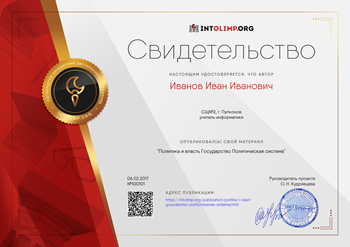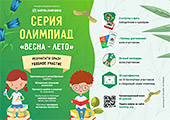| Long-term plan unit: Unit 7: food and drinks | School: NIS, Taldykorgan | ||||||
| Date: 28/03/ 2016 | Teacher names: Mukhametsharova A.K. | ||||||
| Grade: 1C (1 group) |
|
| |||||
| Theme of the lesson: | Things I like | ||||||
| Learning objectives(s) that this lesson is contributing to | 1.UE9 use basic present simple forms [positive and negative] to give basic personal information 1.S3 pronounce basic words and expressions intelligibly 1.S5 produce words in response to basic prompts 1.S1make basic personal statements and simple statements about objects | ||||||
| Lesson objectives | All learners will be able to:
Most learners will be able to:
Some learners will be able to:
| ||||||
| Success criteria | Students will have succeeded in this class if they:
| ||||||
| Value links | Respect and cooperation by:
| ||||||
| Cross curricular links | Kazakh language and literature, Russian language and literature (naming things in Kazakh, Russian and English) | ||||||
| ICT skills | PPT -By teacher, interactive websites | ||||||
| Previous learning | Story time – Practice the phrases: The witch has a black cat not a white dog. Revision of the words – colours, nature vocabulary, animals. | ||||||
| Plan | |||||||
| Planned timings | Planned activities (replace the notes below with your planned activities) | Resources | |||||
| Beginning
| Get students ready to the class by greeting them, asking questions about weather:
Teacher put on some pictures on the board to show objectives and criteria, also teacher says what kind of rules learners should keep at the lesson.
Warm up activity
(milk, soup, fish, ice cream, cookies, juice, pizza, salad, banana )
Telling the LOs and success criteria:
Tell the learners about what they are going to do today:
| Pictures
PPT slides 2-10
board, marker
| |||||
| Middle 3 minutes 3 mins 5 mins
5-7 mins
5 mins
7 mins
|
Before playing, teacher divides the learners into 2 small groups and gives the capital letters of the food for each group. Teacher shows pictures of food on the board and students name them all with their eye open. After teacher says to close the eyes, teacher takes one card away. Students open the eyes and name what is missing. When learners guess the word teacher asks some questions about the picture:
Go back to the Pictures which every small group guessed and make up sentences together with students.
Call 2 students to go out to the board. There will be all the cards on the table. Explain what the pictures mean. Train one example. They take one card saying the beginning of the sentence I like / I don’t like, then they turn over the card and finish the sentence.
For example: I like ..banana. I don’t like ..cheese. (differentiation) Teacher keeps the conversation by asking questions: Is it yummy or yucky?
Peer assessment: others listen when somebody says a sentence and corrects or helps to say. Choose one more able student to assess others by giving a sticker. But the teacher takes the final decision.
| PPT-11 slide
PPT- 12-15 slides cards on the board
https://www.youtube.com/watch?v=frN3nvhIHUk
letters and supporting pictures ‘Yummy and Yucky’
flashcards and rubrics
Worksheet | |||||
| End 3 minutes 2 mins | Feedback (stairs) Ask learners to rise their worksheets and check how many words they could identify and if they are able to:
Home task – learn the words (cards, make sentences) |
| |||||
| Additional information | |||||||
| Differentiation – struggling learners will be given more prompts to help them speak. More able learners will be encouraged to make their speaking more complex. | Assessment - by the teacher, self assessment may be done by the students as the teacher asks questions about what they have learnt when they draw and do crafting. Also the result of the flower will show which words they remember | | |||||














